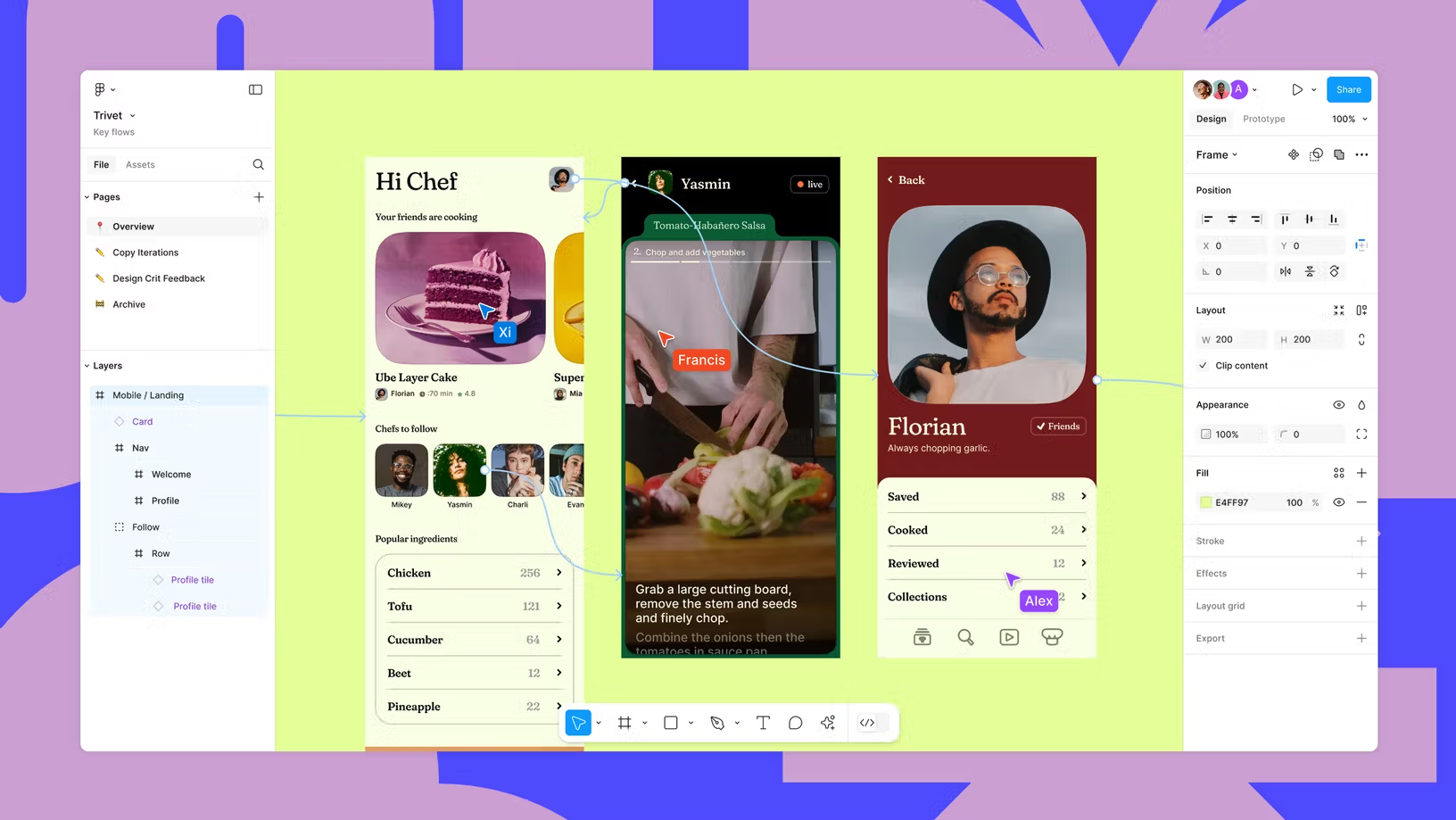
For UI/UX design, Figma is a popular cloud-based design and prototyping tool. It is perfect for teams working on web and app interfaces because it enables real-time collaboration between multiple users. Figma streamlines the entire design process with its user-friendly interface, vector editing, and responsive design tools. For efficiency and consistency, it supports design systems, reusable components, and plugins. Designers can easily transfer projects to developers, share feedback, and produce interactive prototypes. Because it is browser-based, cross-platform compatibility is guaranteed and downloads are not necessary. For contemporary digital design and product development, figma has emerged as the preferred tool.
Figma’s standout feature is its ability to allow multiple users to work on a design simultaneously. Whether you're working with designers, developers, or clients, everyone can view changes in real-time, leave comments, or suggest edits without needing to download files. This makes figma perfect for remote teams and live feedback sessions.
It is a powerful, cloud-based design tool that has transformed how designers create, collaborate, and deliver user interfaces. It is used for designing websites, mobile apps, software interfaces, wireframes, and prototypes. Unlike traditional design software, figma works entirely in the browser, allowing seamless access, collaboration, and workflow management across teams, regardless of their location or operating system.
One of Figma most impressive strengths is its real-time collaboration. Multiple users can work on the same design file at the same time, much like Google Docs. This makes it easy for designers, developers, clients, and stakeholders to stay on the same page, provide feedback instantly, and accelerate the design process. Instead of sending files back and forth or worrying about version control, everyone can work from the same source of truth.
Another key feature is figma prototyping capabilities. Designers can create interactive mockups and clickable prototypes without leaving the design workspace. You can link screens, set transitions, add animations, and simulate user journeys for websites or mobile applications. These prototypes can be shared through a simple link and viewed directly in a browser, making it easy to conduct user testing or present to clients.
Cloud-based storage is another game-changer. Since all files are saved in the cloud, they’re always up to date and accessible from any device. This eliminates the risks of data loss and the need for constant backups. It also allows teams to organize and manage their projects more efficiently.
Its offers powerful tools such as Auto Layout, which allows elements to adjust automatically as content changes—ideal for creating responsive designs. Components and variants allow designers to create reusable elements (like buttons or cards) that can be updated globally. This ensures consistency across a design and significantly speeds up the workflow.
Developers also benefit greatly from figma. Through Developer Handoff, developers can inspect design files, access CSS, iOS, and Android code snippets, and download assets directly—no additional tools or plugins required. This reduces confusion and bridges the gap between design and development.
Its support for plugins and widgets enhances productivity. From accessibility checkers and icon libraries to animation tools and color palettes, there’s a growing ecosystem of extensions to help designers work smarter and faster.
One of the most appreciated aspects of figma is its cross-platform accessibility. Whether you’re using Windows, macOS, Linux, or even a Chromebook, figma runs smoothly in your web browser. There’s also a desktop version for those who prefer working offline or outside a browser environment.
It has also built a strong community where designers share UI kits, templates, icons, and plugins. This community-driven model fosters creativity, learning, and faster project execution.